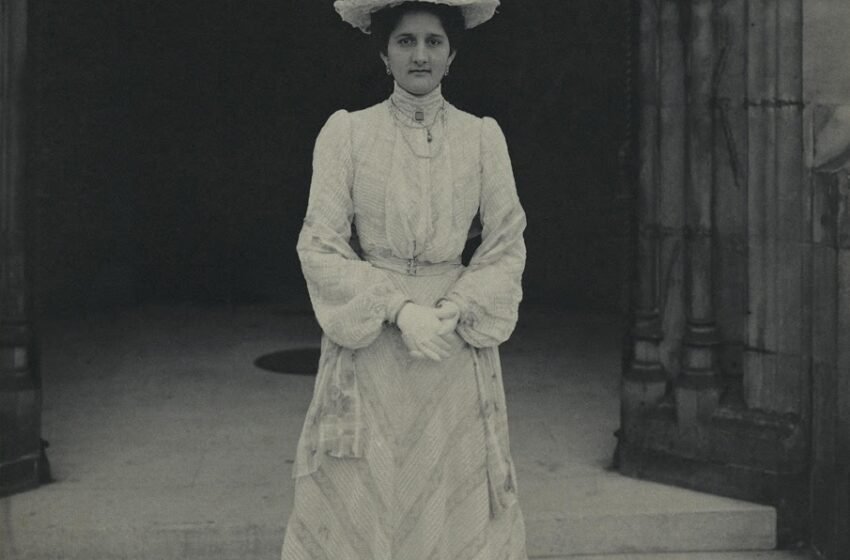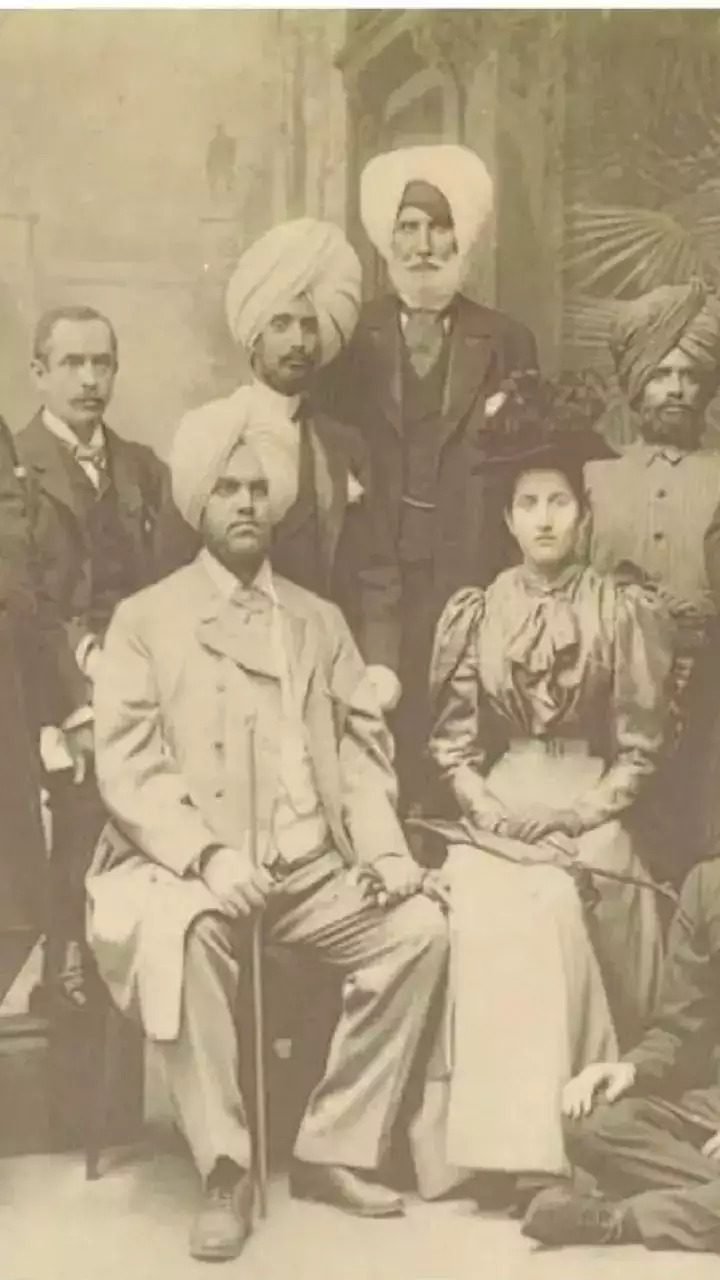Exploring the Shrouded Life of Maharani Rani Kanari of Kapurthala

The historical narratives surrounding Indian royalty have indeed predominantly focused on the Maharajas, often leaving the significant contributions of the Maharanis understated or overlooked. Maharani Rani Kanari of Kapurthala is a poignant example of this disparity in historical documentation. Maharanis, despite their pivotal roles in shaping the destinies of princely states, have often been relegated to the shadows of history, overshadowed by their Maharaja counterparts. Their stories are often subsumed within the broader narratives of their husbands’ reigns, with scant attention paid to their individual achievements, challenges, and legacies.

Maharani Rani Kanari’s story exemplifies this trend. Born as the daughter of a Dewan, her remarkable journey from her familial background to becoming the esteemed Queen consort of Kapurthala deserves greater recognition. Her contributions to the welfare and development of Kapurthala, her endeavors, and her diplomatic acumen merit acknowledgment in historical discourse.
Despite her presumed significant influence and impact on Kapurthala’s socio-cultural landscape, Maharani Rani Kanari’s legacy is often solely linked to her marriage with Maharaja Jagatjit Singh. This highlights a broader systemic issue wherein the achievements and experiences of Maharanis are often overshadowed by their marital alliances.
To address this historical imbalance, there is a pressing need to delve deeper into the lives of Maharanis, including Maharani Rani Kanari of Kapurthala, and amplify their voices in historical narratives. By acknowledging and documenting their contributions independently of their husbands, we can paint a more comprehensive picture of India’s princely past and honor the multifaceted roles played by Maharanis in shaping it.
Google Arts and Culture offers a glimpse into the private lives of royal women in India, this exhibition utilizes the medium of photography to unveil their enigmatic personas and the diverse roles they inhabited, both publicly and privately, throughout history. Spanning a century of photographic evolution and the portrayal of women, these images serve as valuable socio-historical artifacts, capturing the cultural and social dynamics of their era. Moreover, they serve as catalysts for deeper exploration, prompting inquiries into gender dynamics, the intricate interplay between Indian royal households and colonialism, and our understanding of historical narratives. The exhibition includes portraits of Maharani Rani Kanari of Kapurthala, the artist who photographed her was Sir John Benjamin Stone. The portraits were taken in 1905 in the United Kingdom at the Members’ Entrance to Terrace in the Houses of Parliament, Westminster, London.

Maharani Rani Kanari of Kapurthala, though her life remains relatively unexplored, stands as a pivotal figure in the tapestry of Indian royalty. Married to Maharaja Jagatjit Singh of Kapurthala, her story intertwines with the intricate fabric of princely states and colonial India.
In 1895, Rani Kanari Sahiba entered into her marriage with Maharaja Jagatjit Singh as his fourth wife, at Jubbal, a town nestled in the picturesque landscapes of Himachal Pradesh. She was the daughter of the Dewan of Jubbal, a position of considerable influence in the princely administration. The Dewan was a prominent figure within the government hierarchy, often holding significant power and authority. Typically, a Dewan served as a chief minister, minister, or administrator, overseeing various governmental functions. This title was particularly associated with elite families in Mughal and post-Mughal India, who occupied influential positions within the government structure. Thus Rani Kanari Sahiba, herself, was akin to a princess in her hometown. The union between Rani Kanari Sahiba and Maharaja Jagatjit Singh bore fruit in the form of two children: Karamjit Singh Sahib Bahadur and Amrit Kaur Sahiba.

Jubbal, with its rich history dating back to the 12th century, served as the backdrop for Rani Kanari Sahiba’s upbringing. The princely state, though briefly occupied by Nepal and later the British, retained its cultural heritage and royal lineage under the Rathore clan. It was within this historical context that Rani Kanari Sahiba’s early years were shaped, amidst the lush valleys and ancient temples that adorned the region.
The advent of Western education and influence in Indian princely circles brought about significant changes in lifestyle and attire. Rani Kanari Sahiba, like many of her contemporaries, embraced elements of Western culture while retaining aspects of traditional Indian attire. This cultural amalgamation mirrored the broader societal shifts occurring across colonial India. As Indian royalty became more exposed to Western education, the adoption of European attire became more prevalent, even though traditional headwear such as the ‘ghunghat’ or ‘dupatta’ was occasionally retained. Starting from the late nineteenth century, Indian princesses began incorporating Western clothing into their wardrobes and even sourcing their trousseaux from Europe, regardless of whether they observed purdah or not.
For members of the Indian royal families, the possession and utilization of Western goods served as a crucial symbol of modernity and success within the imperial system. Clothing played a significant role in conveying Western sensibilities, and royals traveling to Europe observed that embracing Western dress facilitated their integration into European society at a faster pace. Rani Kanari Sahiba, too, dressed in Western clothing on her visits to the United Kingdom.

However, beyond her sartorial choices and marital alliances, Rani Kanari Sahiba’s legacy endures through her daughter, Amrit Kaur Sahiba. Born in 1904, Amrit Kaur Sahiba epitomized the modern Indian princess, receiving education in England and France, where she excelled in academics, sports, and the arts. She was the only daughter of Maharaja Jagatjit Singh. Her marriage to the Raja of Mandi, Joginder Sen Bahadur, further cemented her position as a symbol of progressive royalty in India.
The influence of Maharani Rani Kanari of Kapurthala on her daughter, Amrit Kaur Sahiba, resonates deeply in the trajectory of Amrit’s life, showcasing a legacy of compassion, determination, and advocacy for the marginalized.
From her early years, Amrit Kaur Sahiba was shaped by the values instilled by her mother. Maharani Rani Kanari’s commitment to philanthropy and social welfare left an indelible mark on her daughter, inspiring a sense of duty towards uplifting the underprivileged. This influence became evident when, in an interview with the New York Herald Tribune in 1927, Amrit expressed her unwavering determination to advocate for the rights of the poorest and most marginalized women. Her mother’s legacy of empathy and activism fueled Amrit’s resolve to be a voice for the voiceless.
The profound impact of Maharani Rani Kanari’s legacy on Amrit’s life is further underscored by pivotal moments in her journey. When faced with adversity, Amrit drew strength from her mother’s resilience. In 1933, when her husband took a second wife, a decision that challenged societal norms and tested her resolve, Amrit made the bold choice to leave India and her children behind for Paris, never to return. This act of defiance against patriarchal traditions mirrored her mother’s courage in charting her own path, free from constraints imposed by societal expectations.
Amrit’s experiences during her time away from India reflect the enduring influence of Maharani Rani Kanari’s legacy. Spending time in the United States before returning to Paris just as World War II erupted, Amrit found herself embroiled in the turmoil of the era. Her unwavering commitment to humanitarian causes led to her arrest by the Gestapo in occupied Paris on December 8, 1940. Accused of aiding Jews by selling her jewelry to facilitate their escape from France, Amrit’s actions echoed her mother’s spirit of compassion and defiance against injustice.

Even in the face of adversity and imprisonment, Amrit Kaur Sahiba remained steadfast in her commitment to fighting for justice and advocating for the marginalized, a testament to the enduring legacy of Maharani Rani Kanari of Kapurthala. Through her daughter’s unwavering resolve and dedication to humanitarian causes, Maharani Rani Kanari’s influence lives on, illuminating a path of courage, compassion, and social change for generations to come.
The story of Maharani Rani Kanari of Kapurthala, though shrouded in the annals of history, serves as a poignant reminder of the complex interplay between tradition and modernity in the realm of Indian royalty. Her journey, from the idyllic landscapes of Jubbal to the corridors of Kapurthala’s palace, reflects the evolving socio-cultural dynamics of colonial-era India, leaving an indelible mark on the legacy of Indian royalty.


